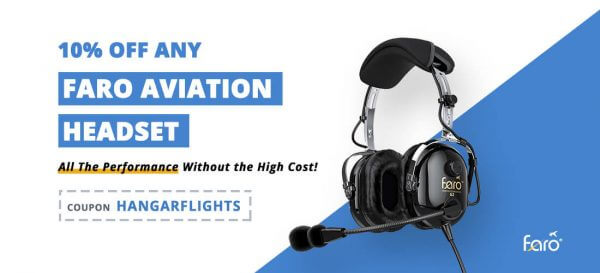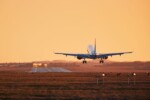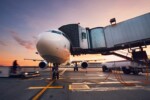The 4 Different Types of Airplane Seats on an Airliner
14 December 2021 | Updated on February 05, 2024
Airplane seats come in various sizes, shapes, textures, and comfort levels, depending on aircraft type. If you have flown on a commercial airliner, you may notice that the different seat designs and sizes are grouped according to their cabin class. Commercial aircraft have the largest number of seats on airplanes of any type. They range from economy class seats, economy plus or premium seats, business class seats, and first-class seats designed for premium comfort.

The type of seat you pay for in an airplane determines the level of in-flight services you can access during the flight. Economy class seats are limited to only the basic inflight services, while economy premium and business class seats unlock additional amenities at an extra cost. First-class seat passengers have full access to all the aircraft’s inflight services but at a premium cost.
The seats in airplanes are typically installed in rows and attached to rails beneath the cabin floor to maximize space, and airline operators are constantly finding new ways to put more seats on airplanes to make more money. However, recent developments in aviation seat technology mean that more modern planes are fitted with smaller, lightweight seats that take up less cabin space while improving passenger comfort.
Different Types of Airplane Seats
Now, let’s look at the 4 different types of airplane seats onboard modern airliners.
Economy class seats
Economy class seats, also referred to as standard or coach seats, are the basic seats on an airplane. These are the most common types of seats in the airplanes because they are cheap, usually costing less than half the price of a first-class seat, and they are tightly grouped with basic in-flight services.
Economy class seats in airplanes like the Boeing 747-400 have a 3-4-3 layout (three seats on each window side plus four seats in the middle section). Other long-haul aircraft like Airbus A340s have a 3-5-3 (three seats on each window side plus five seats in the middle section) layout for more passenger capacity. Legroom (pitch) on economy seats in airplanes is often limited to 28-45 inches on short-haul flights and 28 to 45 inches on long-haul flights, depending on the airline. Economy class seats have average widths ranging from 18 to 20 inches.
Amenities on economy class seats on airplanes include meals, in-flight audio, and video entertainment for long-haul flights. Depending on the airline, you may also receive extras like a blanket, earplugs, an eye mask, and toothpaste.
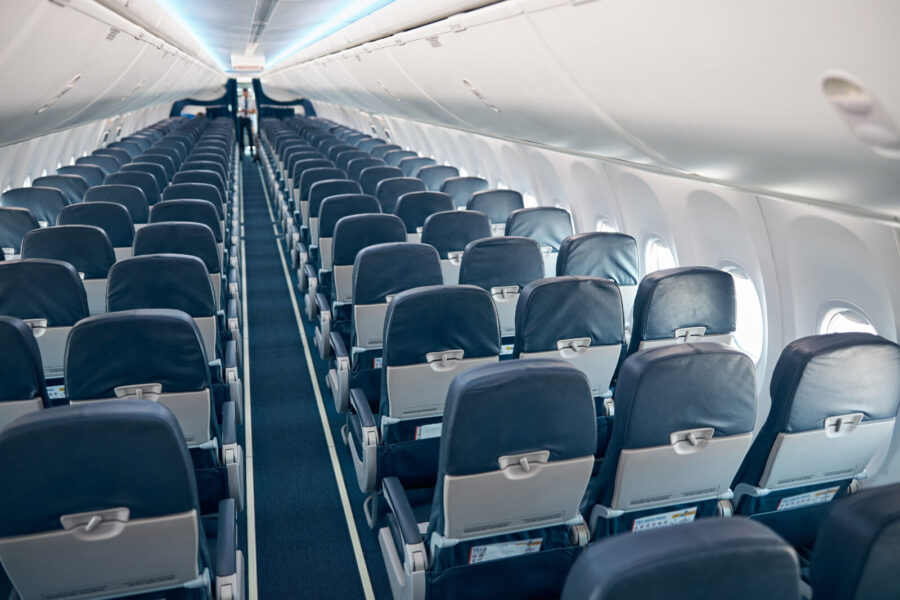
Premium Economy Class Seats
Premium economy class seats, also known as elite economy or economy plus class seats in an airplane, are for passengers willing to fork out the extra cash (around 35 to 85 percent more than a standard economy seat cost) for slightly more legroom, plusher seats, more varied dining options, and inflight amenities depending on the airline.
While premium economy class seats on airplanes are not as luxurious as business or first-class seats. They offer reasonable legroom (about 5-7 inches over economy seats) and seat width (3-6 inches over economy seats). Premium economy seats are commonly available on airlines operating long-haul flights. And extra perks of premium economy seats in airplanes include powered seat recline, larger personal video screens, power outlets for laptops, moveable headrests, leg rests, and adjustable lumbar support.
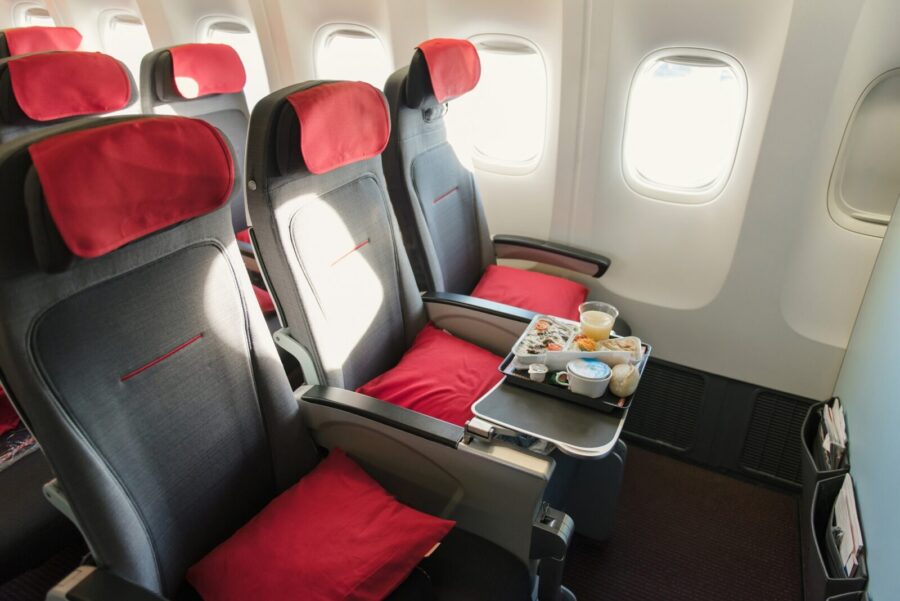
Business Class Seats
Passengers willing to pay an additional 65 percent over a premium economy class seat in airplanes in return for 50 percent extra legroom, or business travelers who need extra seat space might need to check out business class seats. These are bigger and more comfortable than premium economy class seats on airplanes, and they offer significantly more legroom. Legroom (pitch) on business class seats on airplanes is typically between 32 to 64 inches on short-haul flights and a whopping 51 to 83 inches on long-haul international flights, depending on the airline. The average width of a business class seat in an airplane seat ranges from 18 to 20 inches.
Business-class seats in airplanes have numerous adjustable positions designed for optimum passenger comfort. They can recline 180 degrees into a fully horizontal position, creating a flatbed, or configure into a mini-suite for complete privacy. Amenities on business class seats on airplanes include sumptuous free meals served with real cutlery, extensive wine offerings, laptop power plug-is, in-flight audio, and video entertainment for long-haul flights. Depending on the airline, you may also receive extras like a blanket, socks, earplugs, an eye mask, and toothpaste.

First-Class Seats
First-class seats on an airplane are the most comfortable and luxurious seats offering more legroom and personal space than business class seats. These seats are often located near the front or nose of an aircraft, and they rarely exceed ten seats in an airplane. The price of admission into a first-class seating experience can be steep for an average passenger. Prices of first-class seats in airplanes can be ten times as much as economy-class seats, but for that price, passengers get a truly one-of-a-kind experience that is guaranteed to keep anyone spoiled.
Legroom on a first-class seat is massive, and they range from 58-94 inches for long-haul international flights and 34-68 on short-haul and domestic flights. The average width of first-class seats ranges between 18-22 inches. First-class seats incorporate all business-class seat amenities, including extras and complete privacy configurations. You can convert your seat into a private seating cabin and premium food and wine options.
First-class seats represent the epitome of in-flight luxury, where you are confident of being pampered like royalty. And if you are among the unlucky masses who can not afford one, then be sure to bow and show some respect as you walk right past them on your way to the economy class seat as you are boarding your flight.
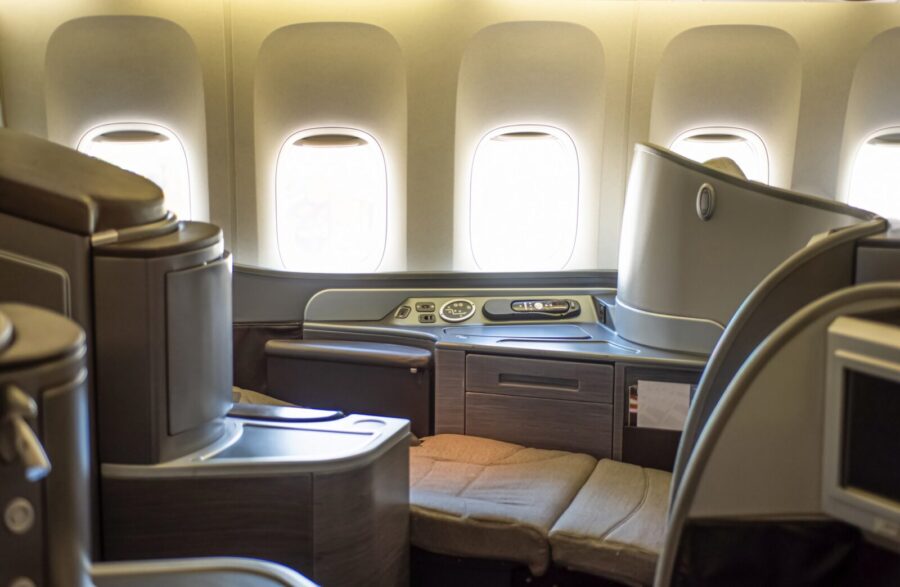

What Makes a Quality Airplane Seat
Now that you know about the different types of airplane seats, let’s look at what actually makes a quality and comfortable airplane seat.
Design
Seats on an airplane have a lightweight design not just to reduce weight and save fuel costs. A common design element for seats in an airplane is an aluminum frame with polyurethane foam padding covering the frame structure. Some airplane seat makers may use carbon composite structures or light metal alloys for the seat frame. Then, they add a layer of fire-blocking molding like Kelvar or Nomex over a foam rubber cushion before covering the entire unit with a cloth or leather upholstery. Airplane passengers may also notice several lightweight plastic and nonmetal seat parts fitted to their seats, making their flight safer and more comfortable.
Covers
Ever step inside an airplane cabin to see rows of beautifully patterned seat upholstery stretching far into the fuselage? Seat upholstery grabs your attention the moment you board an airplane. Seats in the airplane usually have textile or leather upholstery certified to meet airplane cabin aesthetic, technical, and safety requirements. Wool fabrics have been the mainstay of airline seat covers for over forty years because of their flame-resistant, durable, and non-fade characteristics. However, synthetic leather upholstery is gaining acceptance even on economy class seats in airplanes due to its premium look and feel. Also, leather upholstery is waterproof, and it is easier to clean during turnaround with lower long-term ownership and maintenance costs than fabrics.


Safety
All the seats in an airplane are fitted with seatbelts regardless of their cabin class. Modern airplane seats have a stronger lightweight frame and hard plastic shells protecting passengers during a crash. An additional safety feature on seats in airplanes is the use of fire-retardant seat covers. Airplane seat fabrics are evaluated based on their safety performance standards, including each fabric’s reaction to fire, flame ignition speed, flame spread rate, and heat release.
Amenities
Whether flying in luxury first-class or basic economy, you would expect some minimum level of seat equipment. Recliners are standard amenities on seats in airplanes, and they may either be mechanical or powered depending on your seat type and flight duration. Other amenities installed on chairs in the airplane include foldable trays for eating or reading, pockets containing in-flight magazines, safety instructions, and an airsickness bag. Passengers flying on long-haul flights may notice a personal screen or a power outlet for plugging in a laptop.
Comfort
Comfortable airplane seats are a vital marketing tool for airlines. The primary challenge of aircraft seat makers is designing smaller, lightweight seats without sacrificing passenger comfort. First and business-class seats are cozy, snug places for passengers due to the higher fares they command. However, economy seats are designed to be more practical than plush because they constitute the majority of seats on airplanes. You can rate how comfortable the seats in airplanes are by their pitch (legroom) and width (distance between the armrests of an individual seat). The pitch and width of aircraft seats vary depending on the class of seat, and they make all the difference on how comfortable or unpleasant your flight will be.


Conclusion
The design of airplane seats is a complex process that has changed over time to meet the needs and wants of passengers. Seat upholstery, safety features, amenities, and comfort are all important factors in designing an airline seat. You can expect different levels of each depending on your ticket class: economy, business class or first class. If you’re looking for comfortable seating while flying but don’t want to spend more than what’s necessary, try booking premium economy, which often offers extra legroom and improved inflight amenities!






















